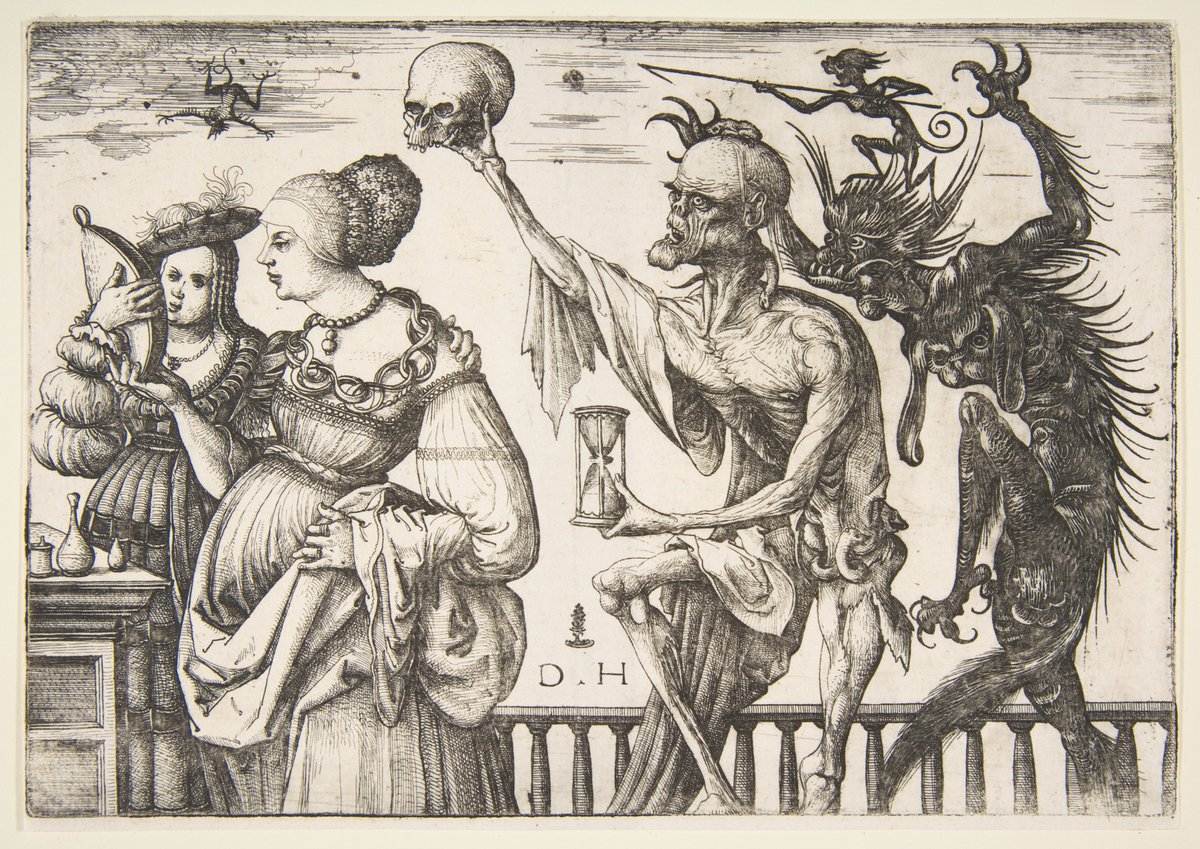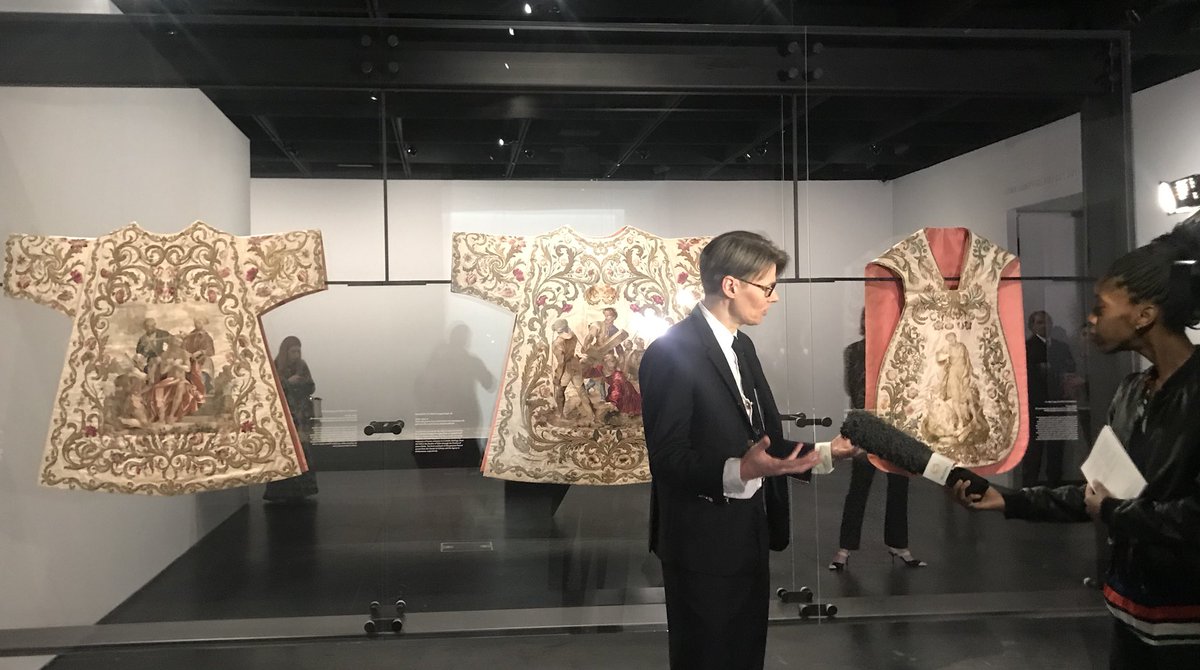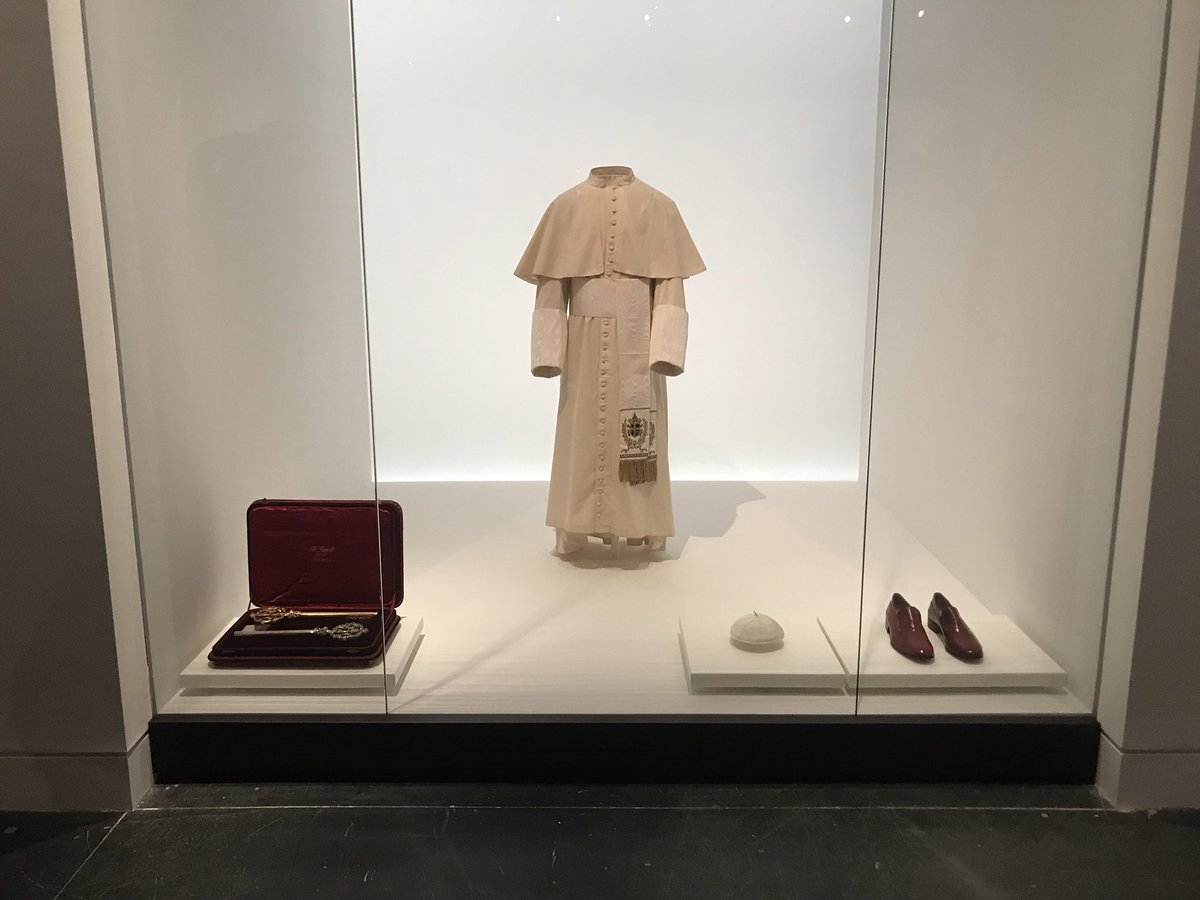Step 1: Ready your materials! ✍️ Etching is a process in which lines or areas are incised using acid into a metal plate (made of iron, copper, or zinc) in order to hold the ink.
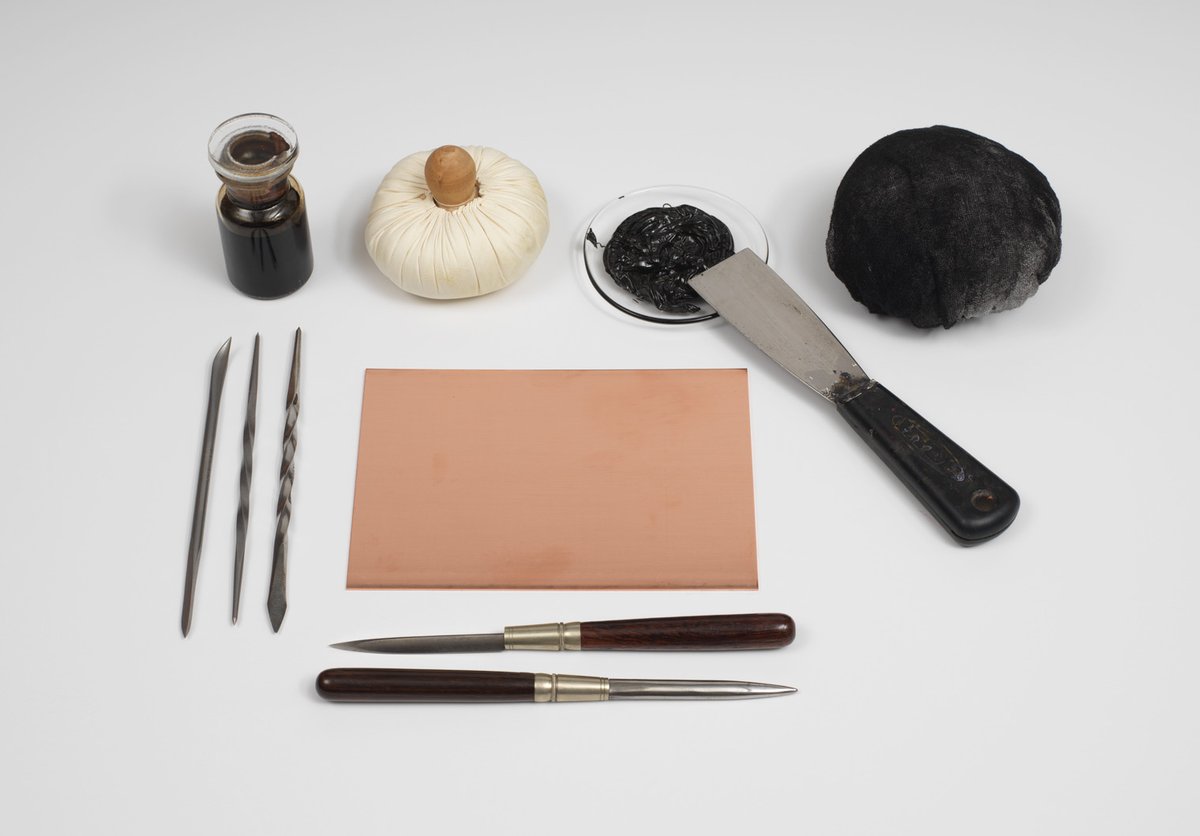
To start, printmakers polish the plate to remove all scratches and imperfections from the surface.
When the surface is totally smooth, it's covered evenly with a layer of acid-resistant varnish or wax, which is called the ground.
#etching
Using a blunt stylus called an #etching needle, the printmaker gently scratches away parts of the ground to create a design, exposing the metal beneath.
When the design is done, it's dipped in acid, which eats into the metal in the exposed areas, creating recesses that can hold ink.
More time in acid means deeper recesses that can hold more ink, resulting in darker lines on paper.
#etching
Once the plate has been satisfactorily bitten by the acid (the best verb for acid!!), the printmaker removes the ground with a solvent. Ah, nice and fresh and ready for ink.
#etching
Using a cloth ball, cardboard tab, or like material, printmakers spread ink on the plate, then remove the excess. It gets a final wipe with a tarlatan rag—a starched cheesecloth.
☝️ Sometimes artists won't wipe fully—a thin layer of ink creates tone.
#etching
With the ink side up, the plate is placed on the bed of a rolling printing press, then covered with a sheet of dampened paper and printing blankets (often made of felt) to soften the pressure on the plate.
#etching
Once printed, the #etching's design appears in reverse of the original. 🙃 The print includes not just the design, but also the outline of the outer edges of the plate, which is known as a plate mark.
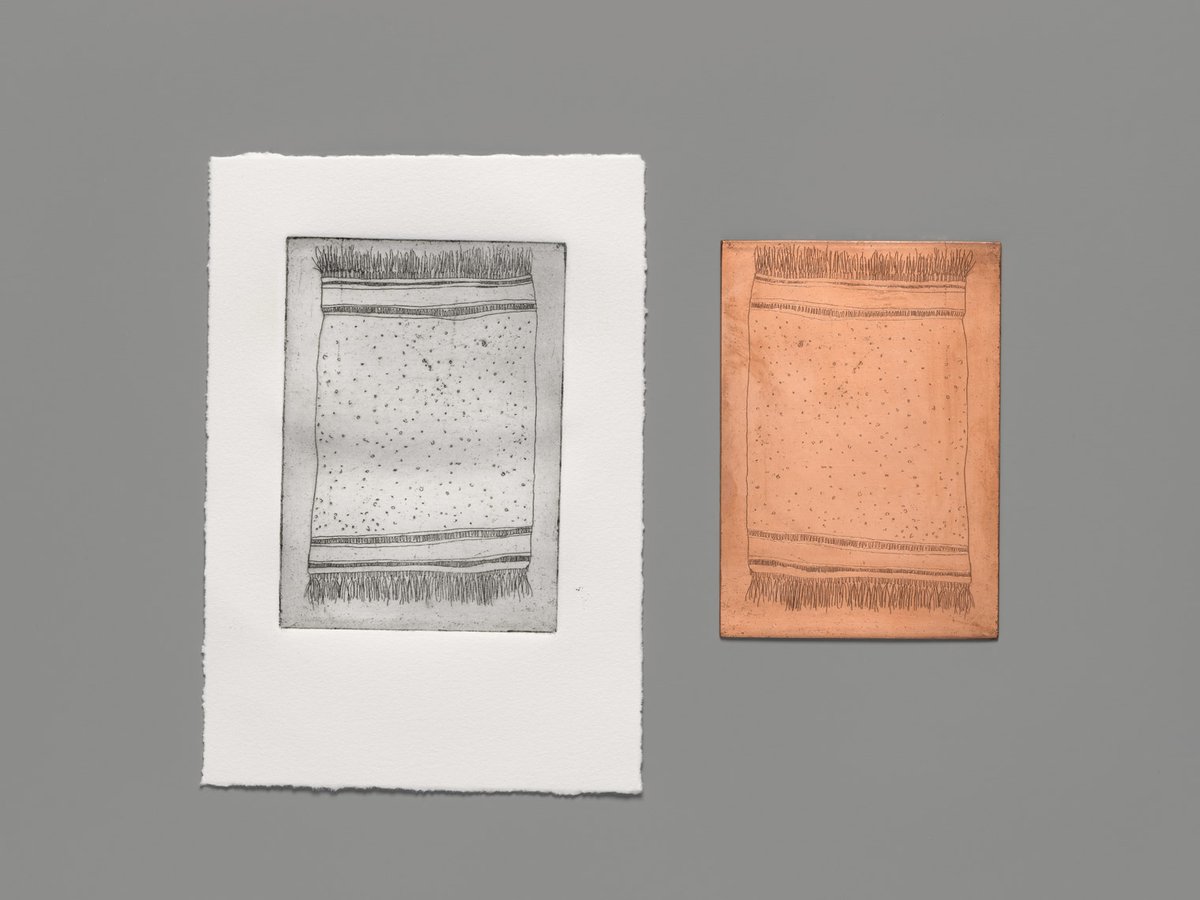
Just here for the GIFs? Watch more printmaking techniques unfold: met.org/2GUM2Ow
